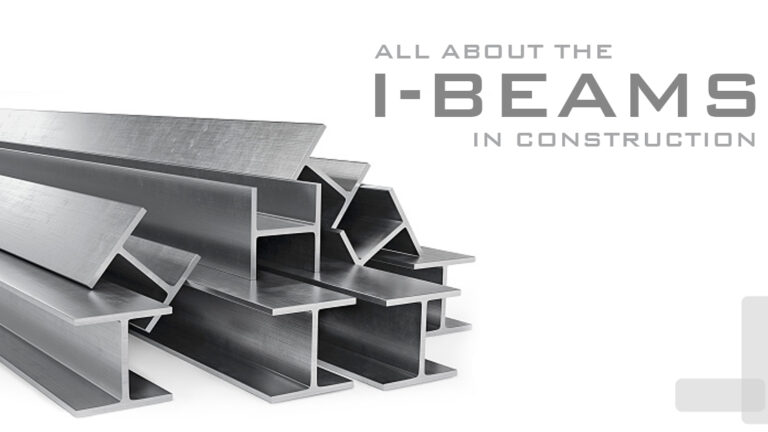Top civil engineering companies in Chennai believe that when it comes to construction, the I-beam is a common structural component used in commercial and residential buildings. These beams are named for their cross-sectional shape, which resembles the letter “I”. They are typically made of steel, and their design allows them to support heavy loads while maintaining their strength and durability. Here’s everything you need to know about I beams in construction.
What Are I-Beams?:
I-beam is made by rolling steel into a long, thin shape with a vertical web and two horizontal flanges at the top and bottom. The flanges are more comprehensive than the web, which gives the beam its characteristic “I” shape. Civil contractors in Chennai say that this design allows the beam to support heavy loads over long spans without sagging or bending.
Advantages Of Using An I-Beam
-
Strength:
The I-beam is designed to withstand heavy loads, making it ideal for construction projects where structural strength is a top priority.
-
Durability:
Steel is a strong and durable material that can withstand extreme weather conditions and resist corrosion, making it ideal for construction projects.
-
Cost-effective:
Steel is a cost-effective material that can be produced in large quantities, making it an affordable option for construction projects.
-
Versatility:
Builders in Velachery say that the I-beams can be used in various construction projects, from small residential to large commercial structures.
How Are Beams Used In Construction?
-
Load-bearing walls:
I-beams can support load-bearing walls, which carry the weight of the building’s structure.
-
Floor joists:
I-beams are used as floor joists, which are the horizontal supports that span the distance between walls and support the weight of the floor.
-
Roof beams:
I-beams are used as roof beams, the horizontal supports that span the distance between walls and support the roof’s weight.
-
Bridges:
I-beam is commonly used to construct bridges supporting heavy loads over long spans.
How Are The Beams Installed?
The installation of I-beams requires careful planning and execution to ensure their proper placement and support. Here are the basic steps:
- Determine the appropriate size and length of the beam based on the project’s load requirements.
- Prepare the foundation by creating a level and stable surface to support the beam.
- Lift the beam into place using a crane or other heavy equipment.
- Secure the beam to the foundation and any adjoining structures using bolts, welding, or other methods.
- Install additional support structures, such as columns or braces, as needed.
Different Types Of I-Beams:
There are several types of I-beams, each with a unique design and properties. Here are a few examples:
-
W-beams:
These I beams have wider flanges than the standard I beam, which makes them better suited for heavier loads.
-
S-beams:
These I beams have a narrower flange than the standard I beam, which makes them better suited for lighter loads.
-
H-beams:
These I beams have thicker flanges and a wider web than the standard I beam, which makes them better suited for taller structures.
-
T-beams:
These I beams have a T-shaped cross-section and are used primarily in concrete construction.
Ultimately, the I-beam is an essential component in modern construction. Their strength, durability, and versatility make them ideal for supporting heavy loads and spanning long distances. Whether used in load-bearing walls, floor joists, roof beams, or bridges, I-beams play a vital role in ensuring the safety and stability of structures. Hence, approach Sathvik, one of the best house construction companies in Chennai, who is known for their exceptional construction services, high-quality materials, skilled workforce, timely project completion, and excellent customer service.








